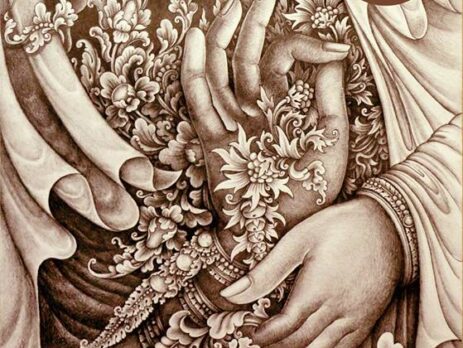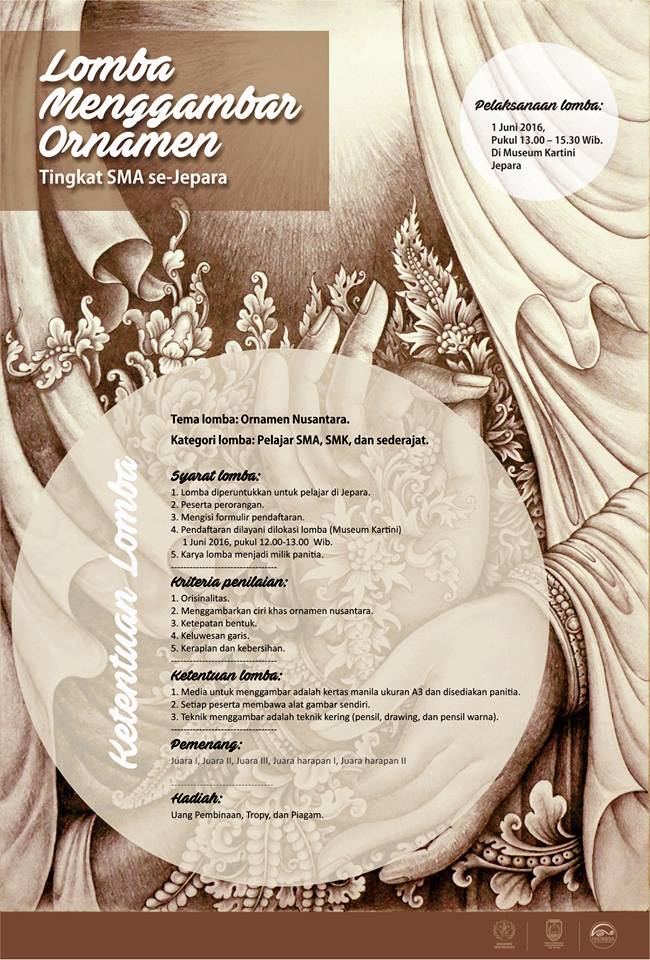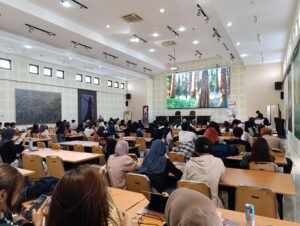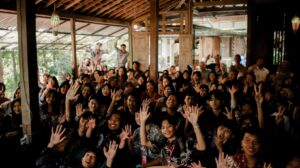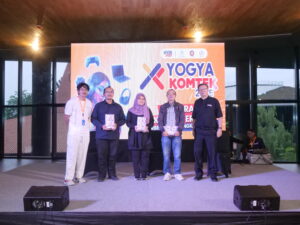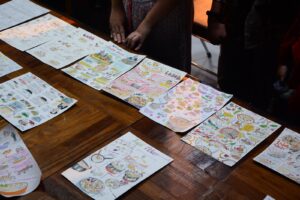"Let there be Light"
In his inaugural speech of professorship at the Faculty of Fine Arts ISI Yogyakarta on 29th
November 1997, Professor Drs. SP. Gustami, S. U. said that the glory of carpentry activities in the area around Jepara has been going on since the reign of Ratu Kalinyamat. The prominent work of woodworkers can be seen in the carvings of Jepara and Kudus buildings that are ngrawit, ngremit, and werit. The ornamentation attached to functional objects is meticulously crafted to bring aesthetic satisfaction. The artistic expressions contain many meanings and are able to record the mindset, way of life, knowledge, and skill attainment of the craftsmen.
The city of Jepara has a long history of influential craftsmanship in Indonesia. The association of its people with other nations, such as: India, China, Arabia, and Europe have contributed to the maturation of craftsmanship. The craftsmen are increasingly able to produce works of art that are in demand by consumers around the world, so that these activities are very economically profitable. Several world-class exhibitions have been filled with craft products from Jepara. The beauty of Jepara's carvings has attracted the attention of global businesses. Many foreign entrepreneurs have invested in Jepara to meet the needs of global consumers. This has had a major impact on shifting the tradition of carving that has been practiced by craftsmen for many years.
There has been a decline in the quantity and quality of carving in Jepara. There are many factors that occur in this city that cause this to happen. Human resources are the biggest problem for the development of Jepara carving. Many craftsmen have migrated out of the region in search of a better life. The competition in this city is very tight and they are starting to look at other regions to develop their business. In addition, there is a struggle for labor with other sectors, such as the clothing industry. The development of the clothing industry has been rapid enough to "take over" labor in other sectors. In Kecamatan Pecangaan and Mayong, garment factories based on foreign investment have grown.
Wood raw materials are increasingly expensive and hard to find as the availability of forests has decreased due to mismanagement and illegal logging that occurred in the past. Craftsmen began working with non-teak wood to make products. Many orders for wood products have shifted to minimalist products with less carving. This change in design trends over the long term will also reduce the demand for expertise in carving skills. The impact can be seen that now wood carving skills have decreased.
The pattern of education in vocational schools, which is one of the providers of skilled workers, is also less reliable. Curriculum changes in vocational education have led to a decline in the quality of student skills. Based on observations of existing phenomena, the cause of the decline in the younger generation's interest in carving is that instant culture is preferred. The spirit of learning for young craftsmen is no longer what it used to be. The carving profession is inferior to jobs that are perceived to make money quickly, even though the job kills the talent they have.
John Ruskin and William Moris in the 19th century envisioned the rise of "craft" as a counter to the industrial revolution that widened the gap between artists, media, and techniques. Their movement became known as the "art and craft movement". Craft activists were passionate about this momentum and its influence reached various parts of the world. Revival is always preceded by awareness movements. The collective consciousness that is formed will transform into action. Similarly, the revival of Indonesian craft needs momentum to rise above the past.
The Craft Department's exhibition in one of Indonesia's craft centers has an important meaning to create a momentum of revival. Old memories are explored again to become the spirit in the revival. The theme "Let there be Light" was chosen to assemble the spirit and good intentions scattered in various places. The hope is that there will be knots that knit each other into a force to be mobilized to build the revival of Indonesian craft. This is a small step that is sincerely swung, hopefully getting a welcome that continues to roll to raise Indonesian craft.
Yogyakarta, May 8, 2016
Agung Wicaksono
Indro Baskoro MP.
———————————-
THIS EXHIBITION IS ORGANIZED BY THE DEPARTMENT OF CRAFT, FACULTY OF FINE ARTS, ISI YOGYAKARTA IN COLLABORATION WITH THE DEPARTMENT OF TOURISM AND CULTURE OF JEPARA REGENCY. JEPARA and HMJ KRIYA FSR ISI YOGYAKARTA.
———————————-
This event also organized
ARCHIPELAGO ORNAMENT DRAWING COMPETITION
———————————-
Race implementation:
June 1, 2016, 13.00 - 15.30 WIB.
———————————-
Competition theme: Ornaments of the Archipelago.
Competition category: High school, vocational school, and equivalent students.
———————————-
Race requirements:
1. The competition is for students in Jepara.
2. Individual participants.
3. Fill out the registration form.
4. Registration is available at the race venue (Kartini Museum) on June 1, 2016, 12:00-13:00 pm.
5. Competition works become the property of the committee.
———————————-
Assessment criteria:
1. Originality.
2. Describe the characteristics of archipelago ornaments.
3. Shape accuracy.
4. Line flexibility.
5. Neatness and cleanliness.
———————————-
Race conditions:
1. The medium for drawing is A3 manila paper and is provided by the committee.
2. Each participant brings their own drawing tools.
3. Drawing techniques are dry techniques (pencil, drawing, and colored pencil).
———————————-
Winner:
First place, second place, third place, first runner-up, second runner-up
———————————
Gift:
In the form of coaching money + trophy + certificate.


